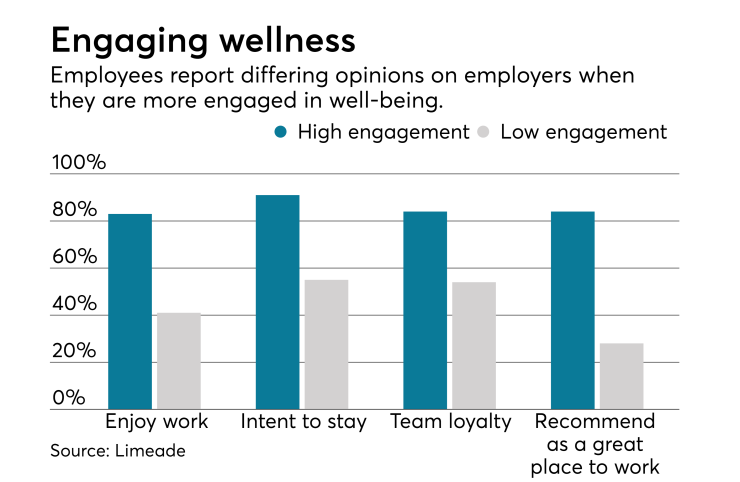Whether you have a workplace wellness initiative or not, you’ve probably noticed wellness programs getting more popular — the “Biggest Loser”-style competitions, step-counting programs, after-lunch walks and healthy snacks. Your company’s wellness program might even involve a meditation room or yoga classes for employees. In short, the goal of any wellness program should be to engage employees and help them get healthier.
Unfortunately, that’s not always the case — and that’s problematic for all involved.
There are a couple of reasons.
Health and wellness have grown in popularity, leading hundreds of companies and providers to jump on the bandwagon. Sometimes, it seems the country is so saturated with wellness programs of myriad types that even I can’t define what a wellness company is anymore. Companies that have approached wellness in a thoughtful way can find themselves facing tension that often exists between HR and finance organizations as they look to curb ever-rising costs.
What’s at issue? Getting employees on board: Only 60% of employees with access to

While these numbers are potentially concerning, we shouldn’t give up yet — there’s one aspect of wellness that’s delivering on its promise. A
So, let’s focus on what’s important and how to make it work. Here is how employers can get to Wellness 2.0.
Focus on chronic diseases and lifestyle changes. To have an impact in the near-term, employers need to address what’s costing them the most money (and affecting their employees’ health) right now. That most likely means managing
See also:
Importantly, employees shouldn’t have to go it alone — coaching can play an invaluable role. While live coaching can very expensive,
Create a truly personal health journey. One size fits all fits no one. Get and keep your employees engaged by offering a wellness program that fits their needs to help them change behaviors so they can reach their health goals. Employers should work hard to understand their employees’ needs and design a program that fits the company’s culture and industry. A manufacturing company has different needs than a consulting firm, and its employees shouldn’t have to fit into the mold of a standard
Focus on behavior change. We’re all different — what motivates one person can be a mere annoyance to another. To truly change unhealthy behavior, assessing readiness is key. Health assessments that identify health goals along with readiness to change and can home in on personalized recommendations for programs and tools based on the proven behavior change science and behavioral economics. Specific, action-oriented advice to help nudge users along their health journey, as well as customized feedback and rewards for pushing forward, can keep participants motivated.
Supercharge your program with predictive analytics. After you begin the journey of creating a healthier and engaged workforce, you can boost the power of your wellness program with
See also:
There are tools available to employees, employers, health plans and health systems that can legitimize a wellness investment and become part of a program that will be embraced by everyone. The success of a wellness solution done right will have exponential positive effects on all stakeholders.
Employers and plan sponsors need to create more comprehensive wellness initiatives that can successfully improve employees’ well-being now and in the future.
Employers are already committed to the idea of wellness — now it’s time to get it right. It’s time to go beyond lifestyle changes and create wellness programs that actually work.





